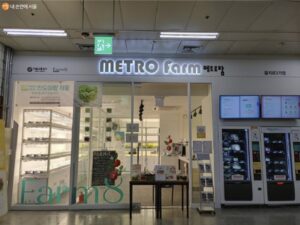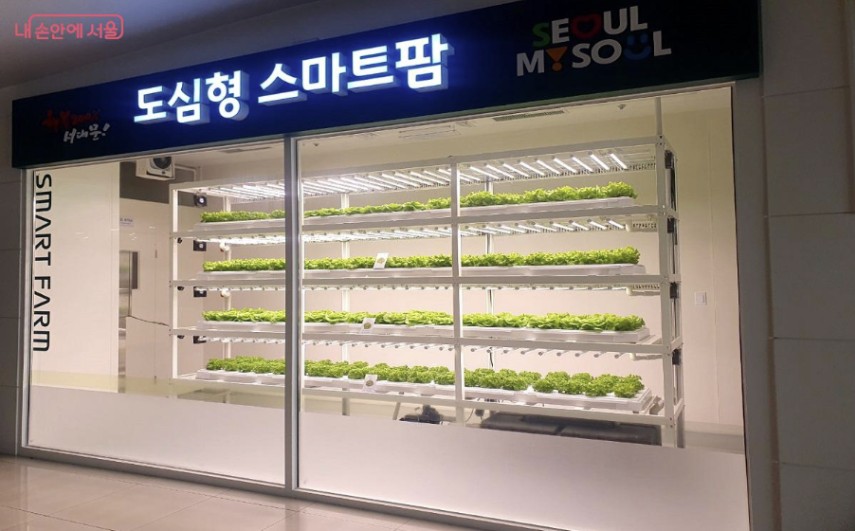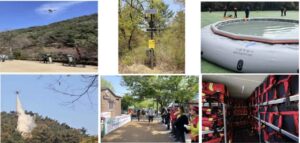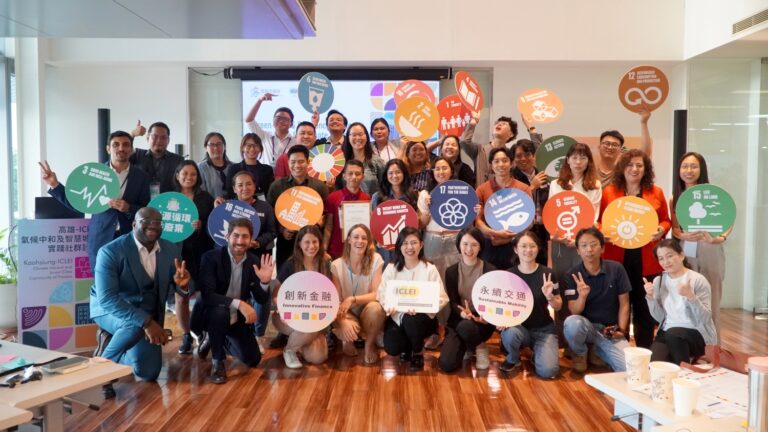Smart Seoul: How the city is cultivating a tech push through urban farming and wildfire detection
This blog was written by Xiaoqian Zhou, ICLEI East Asia Secretariat and edited by Barbara Riedemann, ICLEI World Secretariat
In a rapidly changing world, Seoul isn’t just keeping up; it’s setting the pace. A longtime leader in tech innovation, the city has harnessed artificial intelligence (AI), the Internet of Things (IoT), big data, blockchain, and 5G to shape everything from mobility, governance to public safety. Now, it’s channeling that digital power into smart farming and wildfire detection, proving that technology can be a force for climate resilience and sustainable urban living.
From subway farming to year-round harvests
Imagine stepping off the subway and into a lush vertical farm where leafy greens grow under LED lights, harvested daily and sold from vending machines right next to your train platform. Welcome to Seoul’s Metro Farms, a groundbreaking initiative that has turned the city’s underground spaces into hubs of sustainable food production.
Launched in 2019, the Metro Farms project marked a global first: Five smart farms integrated directly into subway stations. These high-tech farms cultivate varieties of lettuce like Butterhead and Astalis using hydroponics and automation, with Sangdo Station housing the largest operation, harvesting about 50 kilograms of vegetables a day.
But the innovation doesn’t stop at the harvest. Key facilities include a vertical farm dedicated to growing leafy greens, an AutoFarm equipped with automated cultivation machinery, a Farm Academy for educational purposes and hands-on experiences, and a Farm Café that serves fresh salads and beverages. Additionally, the project provides areas for public use, storage, and packaging.

This initiative is part of a broader effort by Seoul to rethink how food is produced, distributed, and experienced in dense urban environments. With 9.6 million residents packed into just 605 km², the city faces severe land shortages, rising emissions, extreme weather events, and growing food insecurity. Traditional farming methods require water, chemicals, and space the city simply doesn’t have. Add to that an aging rural workforce and declining interest among younger generations, and the need for a new model becomes clear.
Seoul’s response? A decade-long push toward urban agriculture powered by innovation. Since declaring 2012 the “Year of Urban Agriculture,” the city has partnered with startups like Avalve, civil society groups, and research institutions to test and scale smart farming. By 2024, apart from the metro farms project, six urban smart farms were operational across districts like Jung-gu and Seongdong-gu, offering everything from salad-growing vertical farms to cooking classes, providing valuable career exploration opportunities for young people, and community food delivery programs for seniors and vulnerable community members, ensuring fresh produce reaches those in need.
Driving much of this transformation is artificial intelligence (AI). AI-powered monitoring systems analyze environmental conditions—like soil quality, humidity, and CO₂ levels to ensure optimal crop growth with minimal resource use. When combined IoT sensors, these tools enable real-time decision-making that cuts water use by up to 90% and lowers greenhouse gas emissions by 10–20%. The farms produce clean, pesticide-free vegetables, all while creating green jobs for retirees and people with disabilities.
By supporting year-round local food production, these farms contribute significantly to food security amid increasing urbanization and include educational programs to teach children about nutrition and modern farming practices.

AI alerts for a swift wildfire response
In recent years, a concerning global trend in wildfire activity has emerged, affecting regions that are typically less prone to destructive fires. Areas previously considered safe are now facing more extreme wildfires. This shift is acutely evident in Seoul, where the frequency of wildfires has been steadily increasing, leading to recent damage to areas that have doubled the 10-year average. Notably, the 2023 wildfire on Inwangsan Mountain marked the most significant incident in Seoul’s history, scorching over 60,000 m² in just two days.
The escalating incidence of wildfires can be attributed to a combination of climate change and human activity. Climate change is fostering hotter, drier conditions, leading to longer fire seasons and an abundance of fuel for wildfires. In many cases, human actions, such as the careless disposal of cigarettes or the use of open flames in areas like hiking trails and residential neighborhoods, have been identified as primary causes of these fires.
In response to this concerning trend, the Seoul Metropolitan Government is implementing an Intelligent Wildfire Detection and Spread Alert System that integrates low-power wide-area network (LPWAN) technology, which has recently been introduced in advanced telecommunications markets, such as the Republic of Korea. This technology includes AI-based image analysis alongside various modern sensors capable of detecting wildfires and alerting authorities to their spread. The system operates outdoors for extended durations, powered by solar panels and batteries, eliminating the need for a 220V power source or a Wi-Fi connection.
The flexibility of LPWAN technology enables immediate deployment in forested areas near hiking trails and residential zones, eliminating the need for prior infrastructure preparation. Furthermore, it is designed to seamlessly integrate with existing wildfire response systems employed by the Seoul Metropolitan Government via an API interface, enabling it to send data directly to another system without needing to build an entirely new system from scratch.
This system allows comprehensive, real-time monitoring and rapid responses during critical moments known as the “golden time,” a window in which quick action can significantly mitigate the effects of wildfires. By detecting early signs of wildfires attributed to hikers and unlawful activities in areas lacking existing infrastructure, the Seoul Metropolitan Government aims to enhance public safety and protect vulnerable environments.
Big tech meets daily life in Seoul’s smart city vision
After a successful debut in 2024 that welcomed over 30,000 visitors, Smart Life Week (SLW) 2025 returns from 30 September to 2 October, offering a unique opportunity to dive into the latest technology trends, exchange ideas, and experience how cutting-edge innovation is shaping Seoul’s everyday urban life.
Under the theme “AI for All, Walking with the Underserved,” SLW will feature interactive exhibitions, global forums, and the prestigious Seoul Smart City Prize Ceremony, all centered on tech-powered solutions grounded in people-centered values and inclusive innovation for the future of cities.
SLW 2025 promises to be more than an event; it’s an opportunity to imagine what’s possible when technology meets vision and when innovation is driven by the goal of creating thriving, resilient cities for all.
For more information, visit: https://www.slw.kr/eng/main.do








